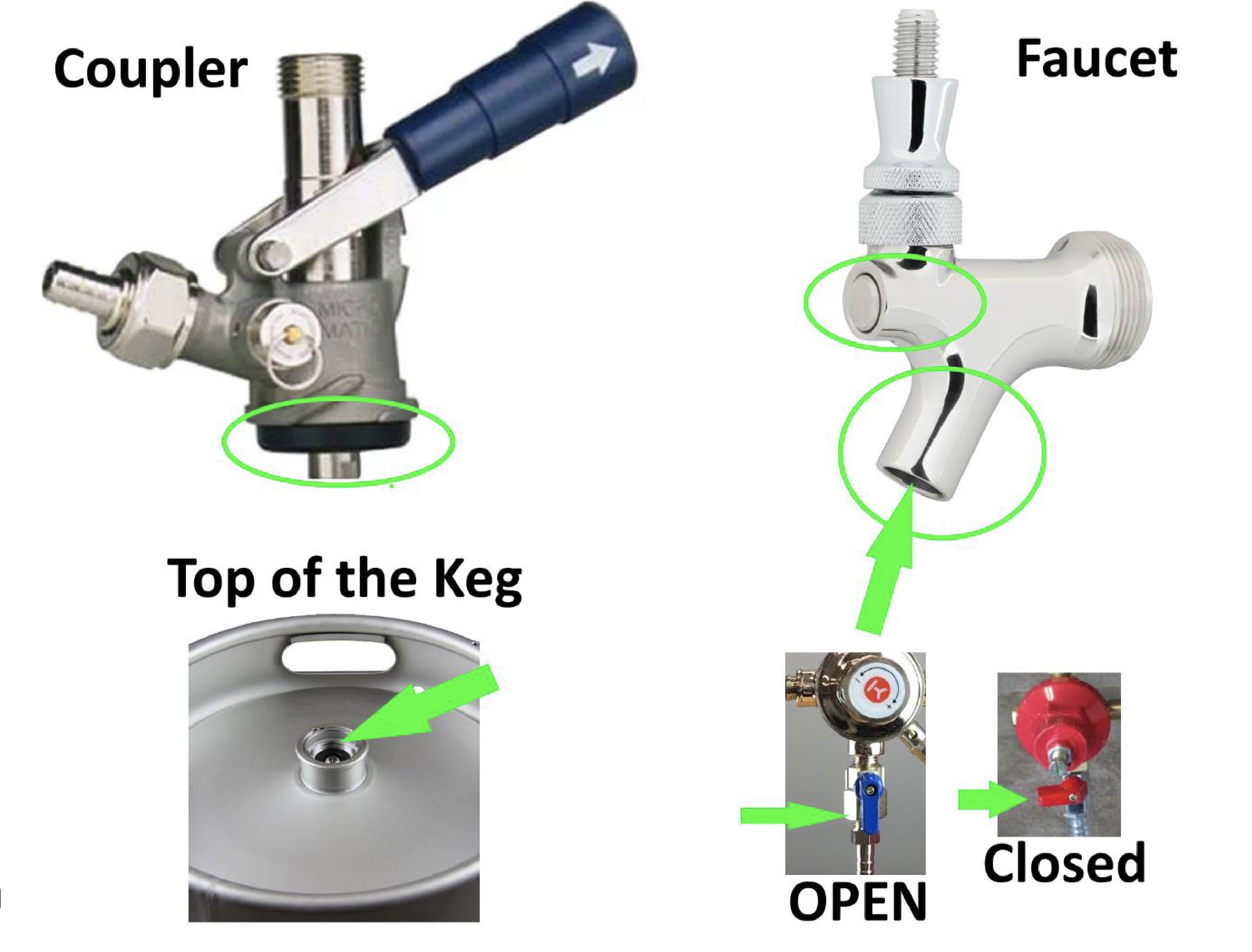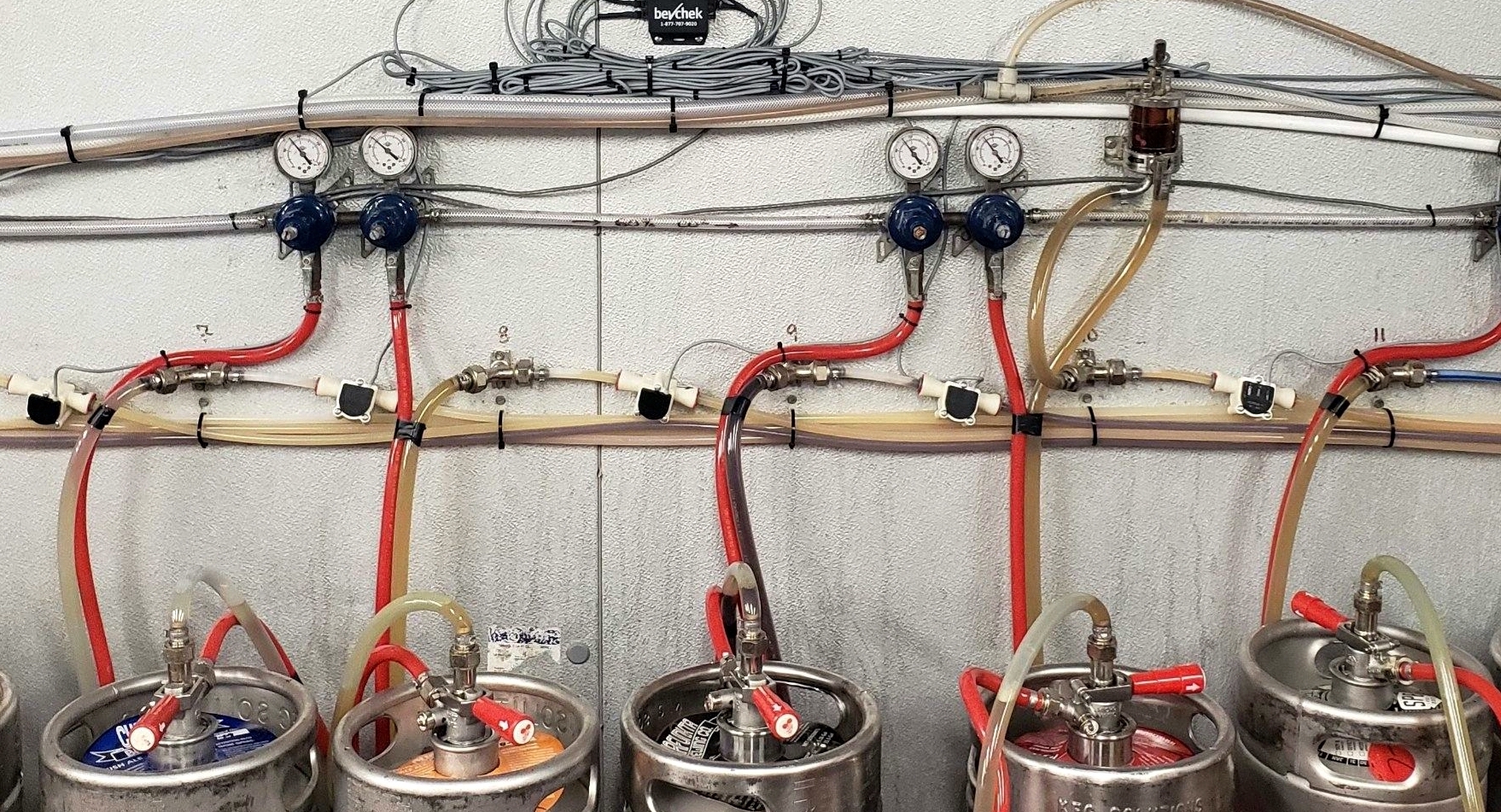COVID-19 has disrupted more than our businesses at this point – it has disrupted our way of life. As the hospitality industry shuts down in various areas, people are asking what they should be doing to protect their draft systems. Below are some simple actions you can take regarding your draft beer system and how to best protect it for the coming weeks.
If you are required to temporarily close doors to guests, here are the steps that should be taken for your draft system (pictures below):- Turn off the gas system. Look for the cutoff switches and turn 90 degrees to the “arm” of the valve is perpendicular to the gas tube. Turn off every switch.
- Unhook all your kegs. Clean the coupler with hot water and a small amount of soap then clean the top of the keg spear with the same solution (where the small metal ball is on the keg). Rinse both areas with water thoroughly and allow to dry. Wrap both with plastic wrap and tape to seal.
- If you have a cleaning keg/tank, flush the beer lines and leave them full of water. If you do not, leave the lines full of beer.
- Clean and seal your faucets. Using warm water, soap and a brush, scrub and wash the outside of the faucets, the bottom of the tap head and the inside of the faucet “tube”. Once dry, wrap tightly with plastic wrap and use tape to seal.
-
- If you have a faucet wrench, disassemble the faucet and completely clean.

Note: Temperature is everything for beer. Keep the cooler as cold as possible for as long as possible. Beer will last inside the keg for 90 days at room temperature but much longer in a colder environment.
UPDATE:
Please note: The information provided is largely what you, the operator can complete yourself. Professional line cleaning companies will have equipment & supplies the general public does not have access to. If you are able to hire professional cleaners, that is always your best bet. If not, we hope our suggestions can provide assistance and alleviate some of the stress of this situation.
- If you have a glycol deck, you should not put pure water in the lines unless you turn the glycol deck above 34F (2C). It should also be noted that there is a trace amount of chlorine in most tap water - so there is a slight chance that, with overly prolonged exposure, this slight chlorination could leach into the protective coating inside the lines themselves.
**It is our opinion, this slight chance is outweighed by the much-more-certain scenario of beer mold growing in unused lines that are filled with beer.
- If you leave beer in the lines, leave your glycol deck on (temperature is everything).
In this trying time, please let us know how if we can help, but more than anything, we strongly encourage you and your employees to monitor updates from the CDC and WHO, and keep your families and customers safe during these challenging times.
Let's help each other and stay healthy.
---
About Bevchek:
Bevchek creates custom technology to provide accurate, reliable information about draft beverage programs. Our systems utilize flow, sales, temperature, inventory, and menus to maximize profits for our clients. Please reach out to us if you need help with your draft beer system during this time. We are in this together.











